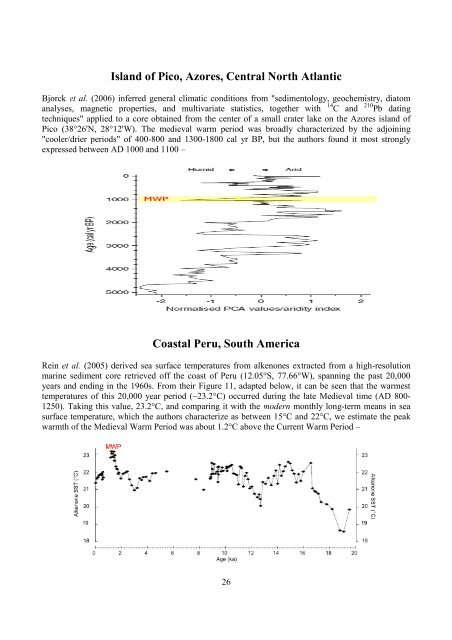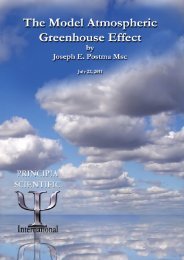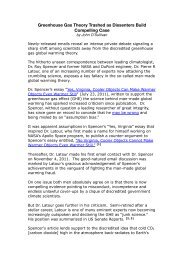Hockey Stick? What Hockey Stick? - WEBCommentary
Hockey Stick? What Hockey Stick? - WEBCommentary
Hockey Stick? What Hockey Stick? - WEBCommentary
Create successful ePaper yourself
Turn your PDF publications into a flip-book with our unique Google optimized e-Paper software.
Island of Pico, Azores, Central North Atlantic<br />
Bjorck et al. (2006) inferred general climatic conditions from "sedimentology, geochemistry, diatom<br />
analyses, magnetic properties, and multivariate statistics, together with 14 C and 210 Pb dating<br />
techniques" applied to a core obtained from the center of a small crater lake on the Azores island of<br />
Pico (38°26'N, 28°12'W). The medieval warm period was broadly characterized by the adjoining<br />
"cooler/drier periods" of 400-800 and 1300-1800 cal yr BP, but the authors found it most strongly<br />
expressed between AD 1000 and 1100 –<br />
Coastal Peru, South America<br />
Rein et al. (2005) derived sea surface temperatures from alkenones extracted from a high-resolution<br />
marine sediment core retrieved off the coast of Peru (12.05°S, 77.66°W), spanning the past 20,000<br />
years and ending in the 1960s. From their Figure 11, adapted below, it can be seen that the warmest<br />
temperatures of this 20,000 year period (~23.2°C) occurred during the late Medieval time (AD 800-<br />
1250). Taking this value, 23.2°C, and comparing it with the modern monthly long-term means in sea<br />
surface temperature, which the authors characterize as between 15°C and 22°C, we estimate the peak<br />
warmth of the Medieval Warm Period was about 1.2°C above the Current Warm Period –<br />
26





